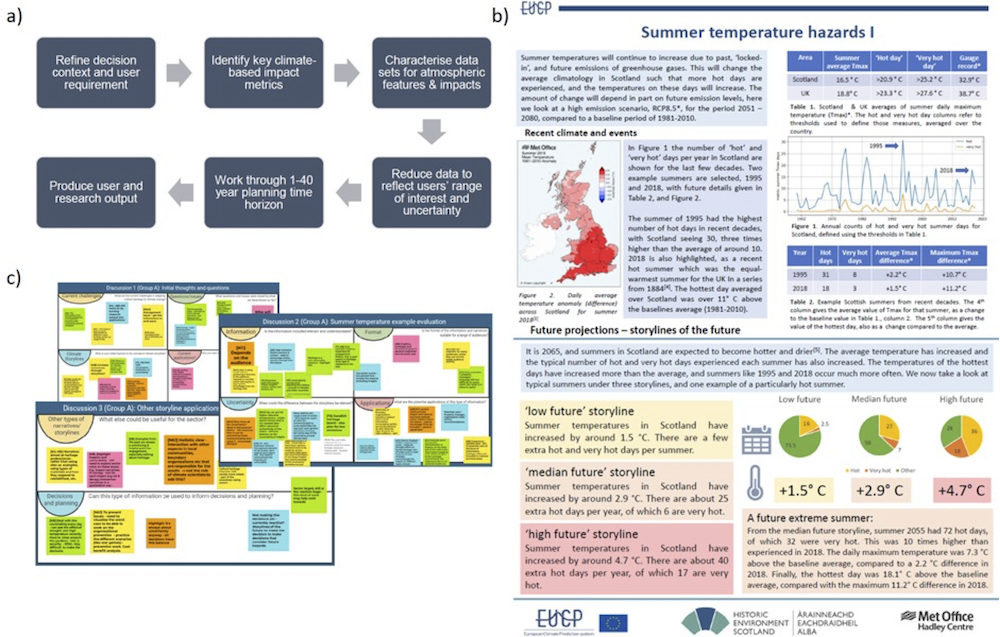
Figure 1. a): The engagement process followed to produce trial storylines which explore uncertainty for planning and decision applications, b): one page from an example product for the heritage management sector and c): feedback gathered from a focus group with sector representatives from around Europe.
One of the ways EUCP is providing guidance to the scientific community is through research into the concept of climate storylines and their applications. This guidance comes in the form of scientific publications on specific methods or applications related to the concept of storylines, and two deliverable reports, which bring together findings from several pieces of work across the project. We demonstrate that storylines can be potentially useful as a tool for; i) framing and communicating complex information, ii) simplifying/navigating large climate model ensembles for a particular purpose, and iii) investigating specific types of events and impacts.
What do we mean by storylines?
The term ‘storylines’ is gaining popularity within climate science and services discourse, with several attempts to define and categorise what this means and motivate the approach. The concept also features in the IPCC AR6 Working Group I report.
In EUCP we refer to ‘climate storylines’, and broadly define them as narrative-based portrayals of past, current or future weather and climate which aim to improve the usefulness or useability of climate information and data for a range of applications. The term can also be used to refer to steps in the analysis process followed when sub-selecting the most appropriate climate models for further analysis. This can be necessary to minimise the number of simulations required when running high resolution climate models or performing impact modelling.
What are the outcomes and benefits for the user and scientific communities?
Despite the growing body of academic literature, there is a lack of real-world examples showcasing their enhanced utility and the role of cutting-edge climate science, such as the research that EUCP is generating. Ongoing work investigates the potential of storylines to meet the EUCP objective of delivering ‘consistent, authoritative and actionable climate information’.
In September 2021, EUCP scientists participated in a workshop to present and discuss the range of scientific research and applications related to storylines across the project with the aim of finalising the content of the related deliverable in WP5. This report will include case studies of storylines co-produced and assessed with users from the water resources and heritage management sectors (see Figure 1), and examples of storylines-related work from across the project with a reflection on their potential applications (such as the recently published storylines of the 2018 European drought). Results from these studies and activities will continue to be published beyond the end of the project.



 Funded by the European Union under Horizon 2020.
Funded by the European Union under Horizon 2020.